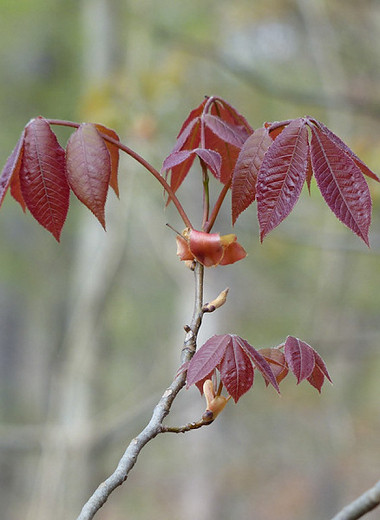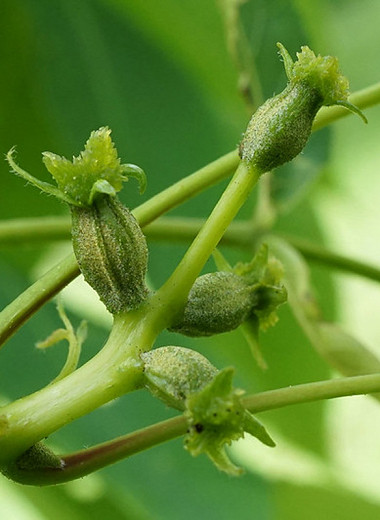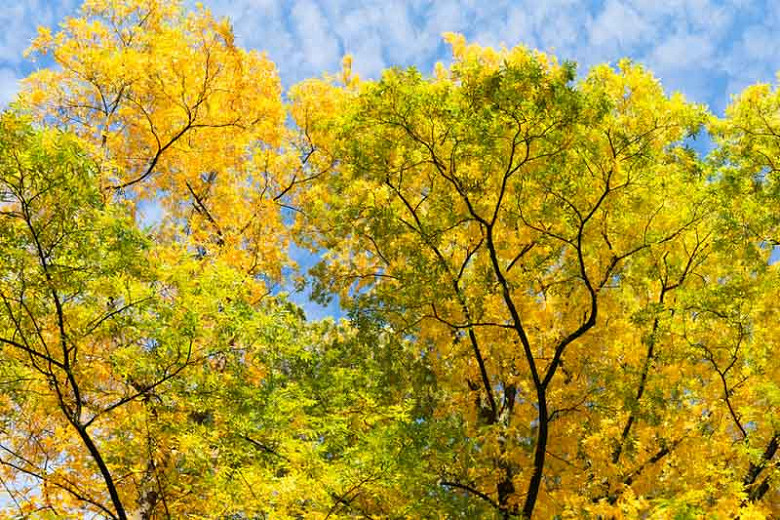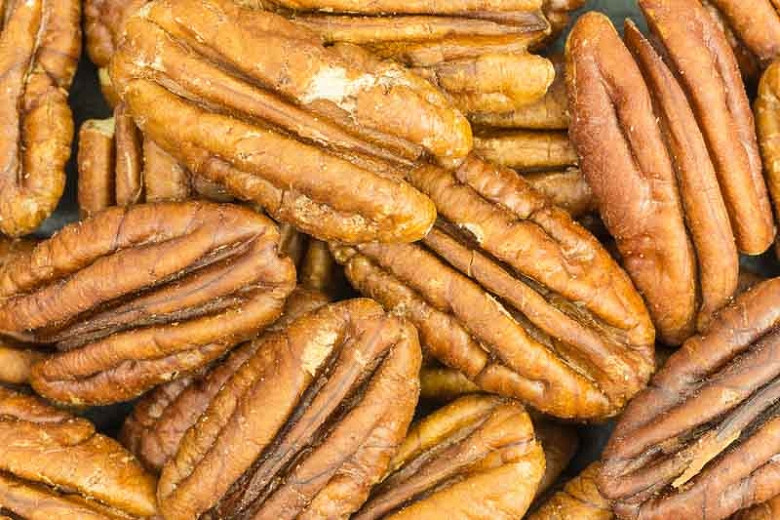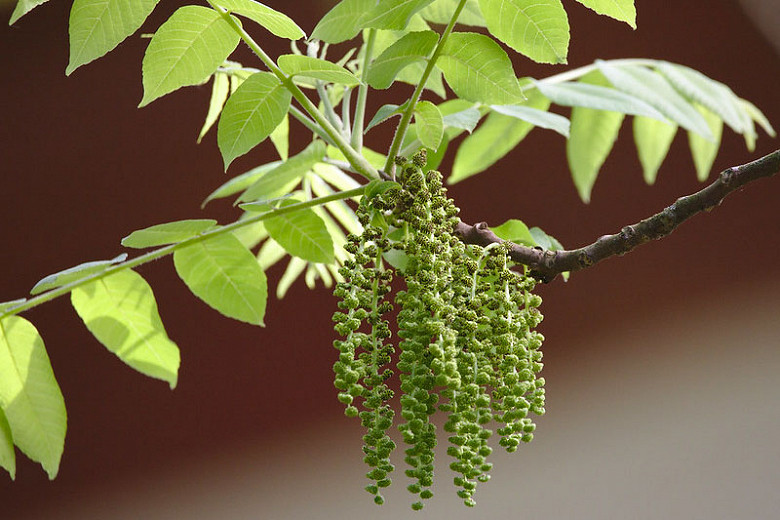Carya glabra (Pignut Hickory)
Long-lived, Carya glabra (Pignut Hickory) is a slow-growing deciduous tree with a straight trunk and a narrow oblong crown with slender, contorted branches. Its gray bark is shallowly ridged and furrowed. The short, picturesque branches are clothed with pinnately compound leaves, 6-12 in. long (15-30 cm), each leaf having 5-7 toothed and ovate leaflets. Emerging burgundy, the leaves mature to lustrous dark green as the season progresses, and turn a rich, golden-yellow color in the fall. Several species of magnificent moths are attracted to the foliage. Inconspicuous greenish yellow flowers appear in spring, the male flowers in hanging catkins, 3 in. long (7 cm), and the female flowers in short spikes. The female flowers are followed by hard, pear-shaped nuts (on trees over 25 years old). Bitter and astringent, the Pignut Hickory fruit is generally considered unpalatable to humans. High in protein and fats, it attracts birds and mammals. Native to the eastern and central U. S., Pignut Hickory occurs naturally in mesic to xeric mixed woodlands, bottomland woodlands, wet hammocks, on stable dunes, and rocky hillsides. Its heavy, hard, strong, tough, and elastic wood is used to make sporting goods, agricultural implements, and tool handles. Pignut Hickory is used as a shade tree throughout much of its range.
- Grows up to 50-80 ft. tall (15-24 m) and 30-40 ft. wide (9-12 m).
- Performs best in full sun to part shade in humusy, rich, moist, well-drained soils. Pignut Hickory is tolerant of shade in the Southeast, but relatively intolerant in the northeastern portion of its range
- No routine pruning necessary. Remove diseased, damaged, congested or crossing shoots.
- No serious pest or disease issues. Keep an eye out for hickory bark beetle, pecan weevil, borers, twig girdler, white heart rot, anthracnose, leaf blotch, powdery mildew, leaf spot, cankers, catkin blight, crown gall and scab.
- Propagate by seed or hardwood cuttings. Most easily grown from fresh seed sown immediately after collection or stratified and sown in spring.
- Difficult to transplant because of its large taproot.
- Native to eastern North America.
Requirements
| Hardiness | 5 – 9 |
|---|---|
| Heat Zones | 1 – 8 |
| Plant Type | Trees |
| Plant Family | Carya – Hickories |
| Exposure | Full Sun, Partial Sun |
| Season of Interest | Spring (Mid,Late)Summer (Early,Mid,Late)Fall |
| Height | 50' – 80' (15m – 24m) |
| Spread | 30' – 40' (9m – 12m) |
| Water Needs | Average |
| Maintenance | Low |
| Soil Type | Chalk, Loam, Sand |
| Soil pH | Acid, Alkaline, Neutral |
| Soil Drainage | Moist but Well-Drained, Well-Drained |
| Characteristics | Showy, Fruit & Berries |
| Native Plants | United States, Midwest, Illinois, Indiana, Kansas, Michigan, Missouri, Ohio, Northeast, Connecticut, Delaware, Massachusetts, Maryland, New Hampshire, New Jersey, New York, Pennsylvania, Rhode Island, Vermont, Southeast, Alabama, Arkansas, Florida, Georgia, Kentucky, Louisiana, Mississippi, North Carolina, South Carolina, Tennessee, Virginia, West Virginia, Southwest, Oklahoma, Texas |
| Attracts | Birds, Butterflies |
| Garden Styles | Prairie and Meadow |

